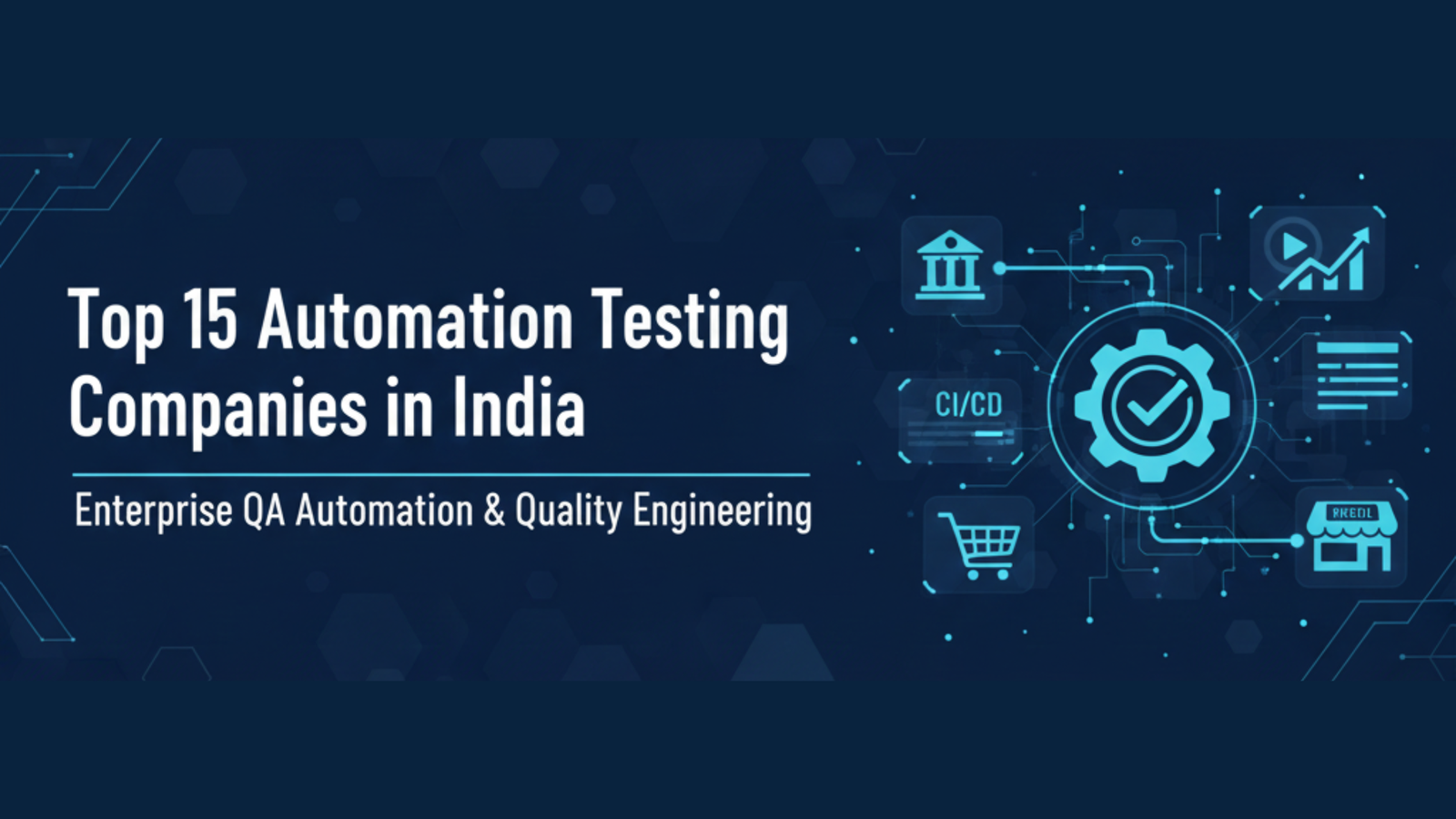Over-the-top (OTT) streaming platforms have changed how people consume content. From live sports and news to binge-worthy series and films, everything is just a click away.
But with convenience comes expectation and users expect seamless, high-quality performance every time they press play.
In a crowded digital landscape where attention spans are short and competition is fierce, even a few seconds of buffering or app lag can lead to user drop-off. For OTT platforms, this is not just a technical issue. It is a direct threat to viewer retention and revenue.
This blog explores how performance bottlenecks impact the OTT business model, and why delivering a smooth, uninterrupted experience is essential to long-term success.
Understanding the OTT Streaming Business Model
OTT platforms deliver video content directly to users via the internet, bypassing traditional cable or satellite systems. These platforms earn revenue through models such as subscriptions (SVOD), advertising (AVOD), or transactional access (TVOD). As per the latest report by Fortune Business Insights, the global OTT services market is projected to grow from USD 70.08 billion in 2024 to USD 229.97 billion by 2032, registering a CAGR of 16.0%. This rapid growth underscores the increasing demand for flexible, on-demand entertainment across diverse digital audiences.
These OTT platforms earn money through one or more of the following models:
- Subscription-Based (SVOD): Viewers pay a monthly or yearly fee (e.g., Netflix, Disney+).
- Advertising-Based (AVOD): Content is free, but monetized through ads (e.g., YouTube, Tubi).
- Transactional (TVOD): Users pay per view or purchase (e.g., iTunes, Google Play).
- Hybrid Models: Combining subscriptions and ads or rentals and purchases.
No matter the revenue model, success depends on one thing, keeping viewers engaged and coming back.
Why Technical Performance Matters for OTT Platforms
An OTT platform’s business model is built on user engagement. The longer viewers watch, the more likely they are to:
- Keep their subscriptions active
- Watch more ads (generating ad revenue)
- Recommend the platform to others
- Pay for premium content or add-ons
Performance issues like buffering, poor video quality, long load times, or app crashes interrupt hat engagement. These are not minor glitches. They are potential dealbreakers that can lead to abandoned streams, negative reviews, and subscription cancellations.
Common Performance Bottlenecks in OTT Platforms
OTT platforms are technically complex. Behind the scenes, they rely on a chain of systems, from video encoding and content delivery networks (CDNs) to front-end interfaces and mobile app frameworks.
Weakness in any of these layers can create bottlenecks. Common culprits include:
Slow Load Times – If an app or video takes too long to load, users may simply leave. Google’s data shows that a page load delay from 1 to 3 seconds increases bounce probability by around 32% – source.
Buffering During Playback – Buffering is one of the biggest frustrations for viewers. It often results from poor bandwidth management, server overloads, or inefficient video delivery algorithms.
Device Compatibility Issues – OTT platforms must perform well across smart TVs, smartphones, tablets, and browsers. Poor optimization for specific devices or operating systems leads to inconsistent experiences.
Inadequate App Performance Monitoring – Without real-time visibility into how the platform behaves across different conditions, technical teams are often slow to respond to issues, resulting in prolonged service disruptions.
The Direct Link Between Performance and Viewer Retention
Viewer loyalty in the OTT world is fragile. Unlike traditional cable, users can cancel or switch platforms with just a few clicks. That makes performance a key differentiator.
- First impressions matter: If the app fails during a user’s first session, chances are they will not return.
- User churn rises with performance dips: Frequent slowdowns or outages directly increase cancellation rates.
- Negative reviews impact growth: Users experiencing poor performance often leave public complaints, which can discourage new signups.
This is why leading OTT companies treat performance as a business issue, not just a technical one.
How Performance Issues Impact Revenue
Performance problems affect revenue in both direct and indirect ways, depending on the platform’s business model.
Subscription-Based Platforms (SVOD) – Churn is a major concern. If users consistently face poor performance, they cancel their subscriptions. This means recurring revenue is lost, and the cost of reacquiring users becomes even higher.
Ad-Supported Platforms (AVOD) – When users leave early or skip videos due to buffering, platforms lose out on ad impressions. Advertisers may also demand refunds or lower their bids if engagement drops.
Transactional Models (TVOD) – If the payment or video playback system lags, users may abandon the purchase process entirely, leading to lost sales.
In every model, performance is directly tied to financial outcomes.
Real-World Example: Netflix’s Investment in Performance Optimization
Netflix, one of the largest OTT platforms in the world, has invested heavily in application performance management.
From building its own content delivery infrastructure to deploying AI-powered adaptive streaming, Netflix’s technical architecture is designed to minimize buffering and maximize viewer satisfaction.
Its focus on performance has allowed it to scale globally without compromising quality, serving as a benchmark for others in the space.
Best Practices to Avoid Performance Bottlenecks
OTT platforms that want to stay competitive must adopt a performance-first mindset. Here are key strategies that can help:
Application Performance Testing
Before every update or new feature launch, platforms should simulate real-world scenarios to catch issues early. Testing under high load conditions ensures the system can handle spikes in traffic during peak hours or live events.
Real-time tracking of app behavior across devices, geographies, and user segments helps detect bugs, latency issues, and crashes before they affect large audiences. This kind of visibility enables fast response and continuous improvement.
Scalable Cloud Infrastructure
Using cloud-native platforms that automatically scale resources based on demand ensures smooth delivery during traffic surges, such as new content releases or live sports streams.
Content Delivery Optimization
Choosing the right CDN strategy and video encoding settings is critical to ensuring low-latency, high-resolution playback across varying internet speeds.
Software Quality Testing
In addition to functional testing, OTT apps must be tested for performance, security, and user experience. This ensures every release meets quality standards before going live.
Why Performance is Now a Brand Differentiator
As more players enter the OTT space, content alone is not enough to stand out. Audiences now expect fast, flawless playback on every device.
Platforms that meet those expectations retain users, grow faster, and attract more advertisers or partners.
Meanwhile, even the most content-rich platforms can struggle if performance issues persist. That is why performance is no longer just an IT metric, it is a core business driver.
Conclusion
For OTT platforms, performance is not just a background concern it is front and center. Every buffering icon, every slow load, and every app crash is a missed opportunity to engage and retain a user.
And in an industry built on user loyalty, those missed opportunities quickly add up to lost revenue.
To succeed, streaming platforms must treat performance bottlenecks as urgent, high-priority business risks.
With the right strategies from application performance testing to real-time monitoring, they can deliver the seamless experiences viewers expect and the revenue outcomes their business models depend on.
Ensure Peak Performance with Avekshaa
We help digital-first businesses like OTT platforms deliver high-performance, secure, and scalable systems. Our expertise in application performance testing, app performance monitoring, and production management ensures that your platform runs reliably, no matter the scale or demand.
Explore Our Services.
Frequently Asked Questions
1. What is an OTT platform, and how does it generate revenue?
An OTT (Over-the-Top) platform delivers video content directly over the internet. It can earn revenue through subscriptions, advertisements, pay-per-view purchases, or hybrid models combining these methods.
2. Why is performance so important for streaming platforms?
Performance directly impacts viewer experience. Buffering, crashes, or delays cause frustration and can lead to subscription cancellations or lower ad engagement. Consistent performance keeps users watching and revenue flowing.
3. What are the most common performance issues OTT platforms face?
Typical issues include slow load times, buffering during playback, poor video resolution, app crashes, and device compatibility problems, all of which can impact viewer satisfaction.
4. How do performance bottlenecks affect viewer retention?
When users face repeated issues with loading or playback, they are more likely to stop using the platform. This leads to higher churn rates and lost lifetime customer value.
5. Can performance problems affect ad revenue?
Yes. For ad-supported models, if viewers exit early due to buffering or slow performance, fewer ads are shown. This reduces ad impressions and potential revenue.
6. What is application performance testing in the context of OTT?
It refers to evaluating how an OTT app performs under various conditions, such as high user load or poor network connections. It helps detect issues before the app is released or updated.
7. How does app performance monitoring benefit streaming services?
App performance monitoring tracks how the platform behaves in real time. It helps teams identify slowdowns, crashes, or device-specific issues quickly, enabling faster fixes and better experiences.
8. What role does cloud infrastructure play in streaming performance?
Scalable cloud systems allow platforms to adjust server resources dynamically. This helps handle spikes in traffic such as during new content releases without compromising performance.
9. How does software quality testing improve OTT reliability?
It ensures that each new release of the platform is free from bugs, meets performance standards, and works smoothly across devices. It combines performance, functional, and security testing.
10. How can Avekshaa support OTT platforms with performance optimization?
We offer services like application performance testing, app monitoring, production management, and software quality testing, helping OTT providers ensure a seamless and scalable viewing experience.


